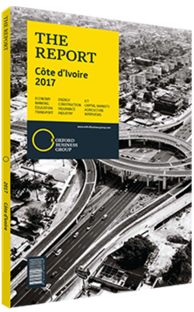Cote d'Ivoire's government looks to spread opportunities more evenly across country
Côte d’Ivoire is prospering on the back of renewed political stability and rapid economic growth, although as is the case with many fast-growing markets, the rewards have not been evenly distributed. The government has grappled with the high concentration of economic activity in select regions, which has compounded regional inequality and led to challenges in service provision. Great progress has been made in the last 50 years, and the current administration has developed policies that should continue to bridge this gap, including large-scale investments in utilities and transport infrastructure.
However, to a large degree, the country’s recent successes are tied to those of its biggest city, Abidjan. Côte d’Ivoire’s urban population recently exceeded 50% of the overall population for the first time, but secondary cities and towns pale in importance compared to Abidjan. The commercial capital is home to almost 20% of the country’s population.
Commercial Centre
Abidjan benefits from a substantial labour force, a large private sector and comparatively strong infrastructure, including one of West Africa’s biggest ports as well as direct links to a number of international destinations. The city is the focus of the country’s economic activity, accounting for a large proportion of the services sector – including finance and telecoms. As a result, it is the major centre of wealth in the country. A 2013 study found the greatest concentration of high-income households to be in the Abidjan area – something that is evident from the parked luxury cars on the streets of districts like Cocody.
Regional Disparities
While this is good news for the city’s inhabitants, it does not necessarily tell the story of the whole country. As the driver of Côte d’Ivoire’s economic success, Abidjan can obscure the real challenges of underdevelopment and poor economic performance that are felt in other areas of the country. The issue of regional inequality and disparity is by no means a new one, and pre-dates independence. The French authorities focused development around Abidjan at the expense of the rest of the country, partly because cocoa, the country’s main cash crop, thrived in the coastal climate of the south-east. This decision had unintended and deleterious consequences for national development. For example, prior to independence, primary school attendance exceeded 70% in the south-east but was less than 20% in the north-west.
Following independence, successive administrations have tried to address this disparity of opportunity. Indeed, a decentralisation programme in the 1980s sought to ease pressure on Abidjan’s services and infrastructure, and bolster development in the regions. During this period, the political capital was moved from Abidjan to Yamoussoukro in the centre of the country – although the primary objective of this relocation, which shifted the legislative and executive bodies to the birthplace of the then-president, was not centred on regional development.
Continental Trend
Abidjan retains outsized importance in terms of growth, while secondary towns and cities have failed to gain traction as a result of a lack of planning and infrastructure is by no means an issue unique to Côte d’Ivoire. The Kenyan capital of Nairobi, for example, accounts for around 60% of that nation’s GDP.
Nonetheless, wealth concentration leads to uneven development across the country. This is particularly evident in the provision and uptake of social services. A range of indicators illustrates a sharp urban-rural divide. For example, in urban areas 84.4% of births have a skilled attendant present, while in rural areas the figure is 44.5%, according to UNICEF. The prevalence of underweight children under five years of age is far higher outside urban areas, and urban dwellers are three times more likely to use improved sanitation facilities than their rural peers.
You have reached the limit of premium articles you can view for free.
Choose from the options below to purchase print or digital editions of our Reports. You can also purchase a website subscription giving you unlimited access to all of our Reports online for 12 months.
If you have already purchased this Report or have a website subscription, please login to continue.

